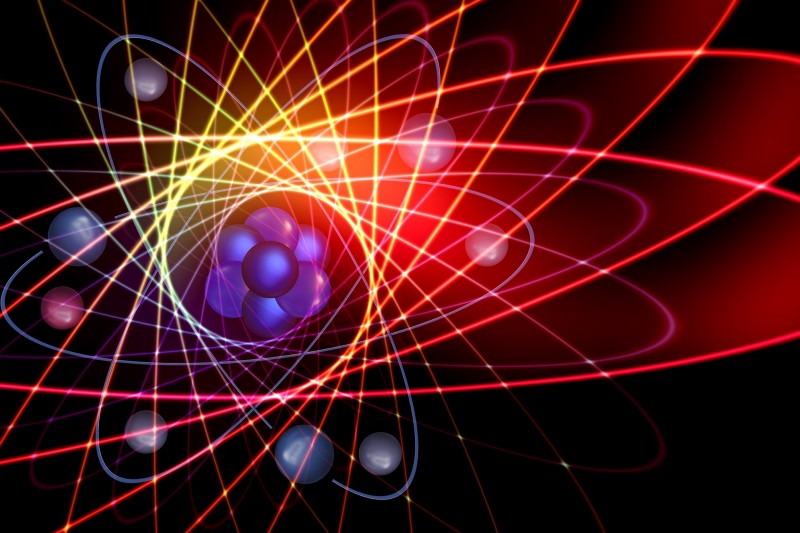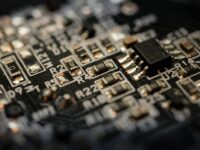The Earth is constantly awash with energy. During the day, photons literally fall from the sky, pumped out by fusion reactions in the Sun, and power countless processes on Earth. Humans have not evolved photosynthesis (yet), but a technological workaround has been developed. Solar panels now cover the roofs of homes and acres of solar farms, allowing humans to tap into this vast power source. But how do solar panels work? The answer lies in the exploitation of two fascinating phenomena of quantum physics: the photoelectric effect and semiconducting materials.
The 17th and 18th centuries saw the development of quantum theory, a physical model which describes the universe on the smallest scales. Quantum mechanics is based on the hypothesis that energy is emitted as “quanta,” discrete packets of energy with a characteristic frequency — meaning that particles behave as both tiny spheres of matter and oscillating waves. Albert Einstein applied this interpretation to explain a previously mysterious phenomena, the photoelectric effect, for which he was awarded the Nobel Prize in Physics in 1921 and which launched the modern field of quantum mechanics.
Einstein’s paper sought to explain the photoelectric effect, which had been observed since the mid-1800s. Experiments revealed that when sufficiently intense light strikes a surface, a spray of electrons is ejected from the material, where the intensity of the ejection is proportional to the wavelength of the light. If a voltage was applied across the material while this effect was triggered, an electric current could be induced across the material. Einstein hypothesized that the energy from each quantum of light was being absorbed by the electrons, which would be freed from the material if the absorbed energy was greater than the binding energy holding the electron in place.
Physicists discovered that the photoelectric effect was most feasibly created using a special class of materials called semiconductors.
This easy generation of electric current had very attractive applications, and physicists set to work trying to create devices which could support this effect. They discovered that this effect was most feasibly created using a special class of materials called semiconductors.
In excellent conductors such as metals, it doesn’t take much of a push to induce an electron to jump from a bound state to an unbound one, meaning electrons can flow through the material with ease. This amount of energy needed to zap an electron between states is called the band gap. Insulating materials have a much wider band gap, meaning a large amount of energy is needed for an electron to be excited from its bound state and start moving through the material.
Semiconductors have a unique version of this band gap: while it still takes a certain amount of energy to change its electrons’ states, a semiconductor’s band gap only allows electrons to flow in one direction. Once one electron starts to move, this single charge is amplified into a much stronger electric current.
The mechanism behind this effect is the p-n junction. Semiconducting materials come in two forms, p-type (where “p” stands for “positive”) and n-type (where “n” means “negative”). Semiconductors usually contain a mix of p- and n-types, and when placed close together form a p-n junction (physicists are renowned for their creativity). N-type semiconductors have a slight negative charge because they carry more bound electrons than the material normally does; p-type semiconductors have a slight positive charge because they carry fewer electrons. These absences where electrons should be are called “holes,” and act like small positive charges.
The p-n junction serves to amplify a trickle of a few electrons into a rush of electric current, which can then be collected and used.
So what does the energy conversion process look like in a solar panel? On a sunny day, a photon zips from space and strikes the surface of the semiconducting material in a solar panel. If the photon is sufficiently energetic, an electron gains enough energy to escape its bound state, and begins to diffuse throughout the material. This electron may reach a p-n junction, and the negatively charged electron is accelerated from the negative n-side to the positive p-side. When these electrons are pulled away, they leave behind holes, which other electrons in the surrounding material then move to fill, creating a cascading flow of electrons. The p-n junction serves to amplify a trickle of a few electrons into a rush of electric current, which can then be collected and used.
Solar panels are often hailed as the energy solution of the future. Whether or not this is true — increasing efficiency and declining cost are drawing favor, while concerns about the toxicity of manufacturing are rising — they certainly stand as a testament to humankind’s ability to harness the mysterious mechanisms of the world around us.
Semiconductor Physics (1997). DOI: 10.1007/978–3–662–09855–4
The Old Quantum Theory (1967). DOI: 10.1016/C2013–0–02033–6

